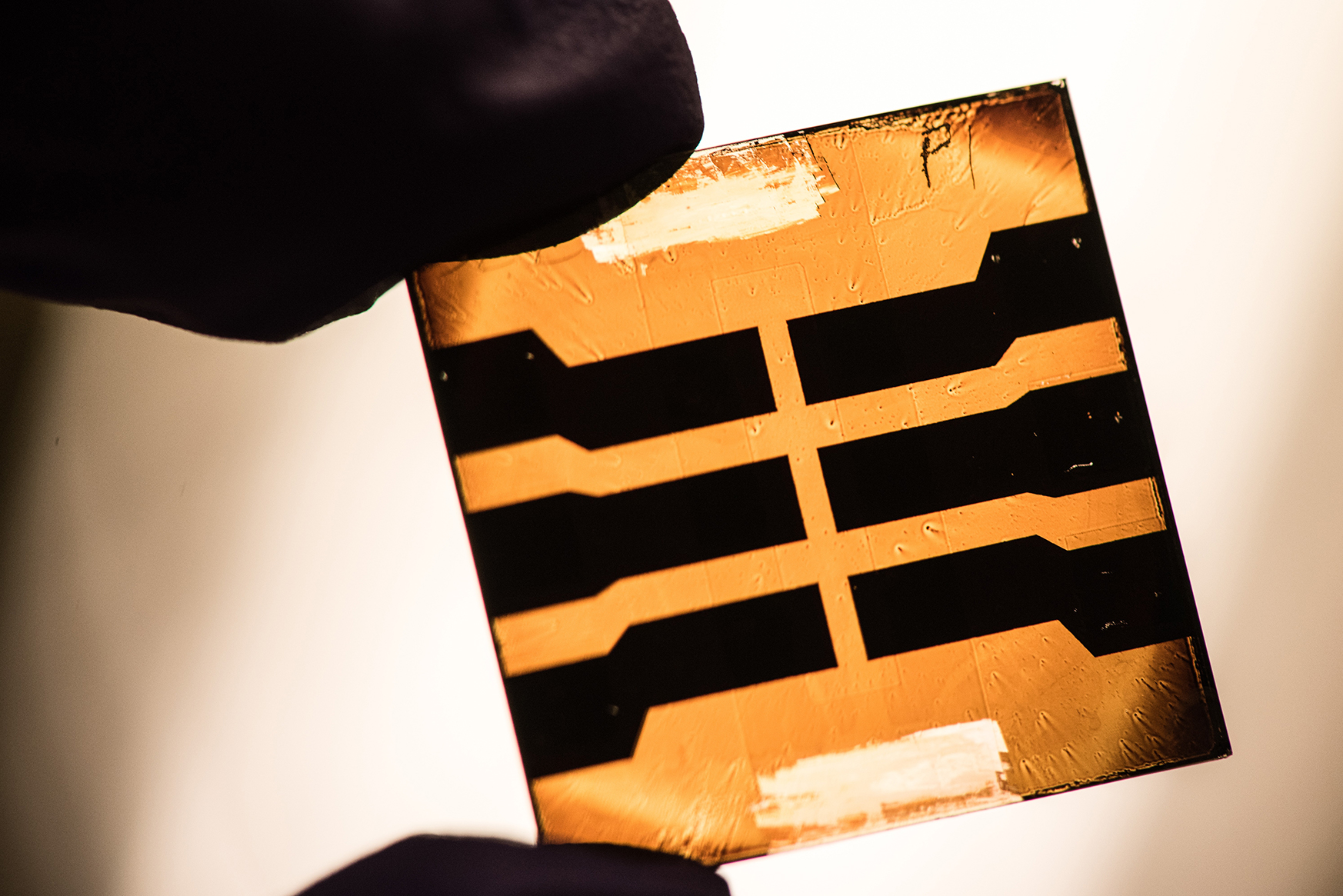News Release: NREL Researchers Capture Excess Photon Energy to Produce Solar Fuels

Scientists at the U.S. Department of Energy’s National Renewable Energy Laboratory (NREL) have developed a proof-of-principle photoelectrochemical cell capable of capturing excess photon energy normally lost to generating heat.
Using quantum dots (QD) and a process called Multiple Exciton Generation (MEG), the NREL researchers were able to push the peak external quantum efficiency for hydrogen generation to 114 percent. The advancement could significantly boost the production of hydrogen from sunlight by using the cell to split water at a higher efficiency and lower cost than current photoelectrochemical approaches.
Details of the research are outlined in the Nature Energy paper Multiple exciton generation for photoelectrochemical hydrogen evolution reactions with quantum yields exceeding 100%, co-authored by Matthew Beard, Yong Yan, Ryan Crisp, Jing Gu, Boris Chernomordik, Gregory Pach, Ashley Marshall, and John Turner. All are from NREL; Crisp also is affiliated with the Colorado School of Mines, and Pach and Marshall are affiliated with the University of Colorado, Boulder.
Beard and other NREL scientists in 2011 published a paper in Science that showed for the first time how MEG allowed a solar cell to exceed 100 percent quantum efficiency by producing more electrons in the electrical current than the amount of photons entering the solar cell.
“The major difference here is that we captured that MEG enhancement in a chemical bond rather than just in the electrical current,” Beard said. “We demonstrated that the same process that produces extra current in a solar cell can also be applied to produce extra chemical reactions or stored energy in chemical bonds.”
The maximum theoretical efficiency of a solar cell is limited by how much photon energy can be converted into usable electrical energy, with photon energy in excess of the semiconductor absorption bandedge lost to heat. The MEG process takes advantages of the additional photon energy to generate more electrons and thus additional chemical or electrical potential, rather than generating heat. QDs, which are spherical semiconductor nanocrystals (2-10 nm in diameter), enhance the MEG process.
In current report, the multiple electrons, or charge carriers, that are generated through the MEG process within the QDs are captured and stored within the chemical bonds of a H2 molecule.
NREL researchers devised a cell based upon a lead sulfide (PbS) QD photoanode. The photoanode involves a layer of PbS quantum dots deposited on top of a titanium dioxide/fluorine-doped tin oxide dielectric stack. The chemical reaction driven by the extra electrons demonstrated a new direction in exploring high-efficiency approaches for solar fuels.
Funds for the research came from the Department of Energy's Office of Science.
NREL is the U.S. Department of Energy's primary national laboratory for renewable energy and energy efficiency research and development. NREL is operated for the Energy Department by The Alliance for Sustainable Energy, LLC.
###
Last Updated May 28, 2025
